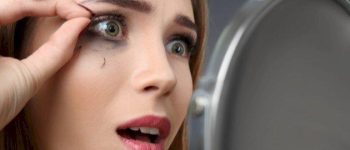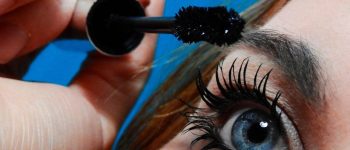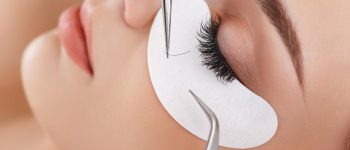Baby eyelashes not only keep their eyes clean and moist but also add to the beauty of their adorable faces. While some infants are blessed with long and dark lashes from birth, others take a bit longer to develop them fully. However, there’s no need to worry as we dive into the fascinating world of baby eyelashes and what you can expect during their growth.
Baby Eyelashes at Birth
When it comes to newborn eyelashes, each baby is unique. Some are born with these delicate strands, while others take their time before they start to sprout. Rest assured, whether your little one is born with eyelashes or not, it’s usually nothing to be concerned about. In fact, some babies have such fine and light lashes that they may not be noticeable until they darken and grow longer in the following months. Interestingly, premature babies might not have any lashes at birth.
Newborn’s Eyelashes: What to Expect
The appearance of newborn eyelashes is largely influenced by their genetic makeup. Therefore, it’s hard to predict what to expect. However, remember that the color of their lashes can change over time. So, if your baby has light and thin lashes at birth, don’t fret! They will gradually darken and become more visible as they grow.
When Do Eyelashes Form?
The fascinating process of eyelash formation begins around the 22nd week of pregnancy. During this time, the mother’s estrogen levels increase, stimulating hair growth not only in her own body but also in her developing baby. You may even notice changes in the texture and length of your own hair during pregnancy.
Why Do Some Babies Have No Eyelashes?
It’s not uncommon for some babies to take longer to develop their beautiful lashes. Several factors contribute to this, such as genetics, nutritional factors, and gestational age at birth. Some babies simply have a different genetic makeup that affects the timing of their eyelash growth. Additionally, a deficiency of certain nutrients, such as biotin, zinc, iron, vitamin C, or vitamin D, in the mother’s diet can result in delayed eyelash growth. If your baby was born prematurely, their lashes may not have had enough time to develop. Finally, some babies are born with light-colored lashes that are difficult to see, even if they have darker hair on their heads. Over time, these light lashes will darken and become more prominent.
Do Babies’ Eyelashes Change Color?
Yes, babies’ eyelashes can change color. Just like their hair, the color of their lashes is determined by their genetic makeup. If your baby’s lashes come in light and thin, fear not! With time, these strands will fall out and be replaced by darker, more vibrant lashes. Usually, the color of their lashes matches their hair color.
Will a Newborn’s Eyelashes Fall Out?
Indeed, a newborn’s eyelashes will naturally fall out after a few months. Similar to the hair growth cycle, eyelashes follow a pattern of growth, shedding, and regrowth. Babies typically grow a new set of eyelashes every four to eleven months. Sometimes, babies may even pull out their own lashes as a way to self-soothe, similar to how they suck their thumbs.
When Do Babies’ Eyelashes Grow to Full Length?
By the age of two months, most babies’ eyelashes will have reached their full length. However, the timeline for eyelash growth can vary depending on your baby’s genetics, overall health, and gestational age at birth.
Eyelash Growth Cycle
Understanding the eyelash growth cycle can shed light on their development. This cycle consists of three phases: growth, degradation, and resting. After the resting phase, the eyelash naturally sheds, and the growth cycle begins again. The growth phase typically lasts between one and two months, followed by a degradation phase lasting around 15 days. Finally, the resting phase occurs for about four to nine months, leading to a total cycle of approximately four to eleven months.
Eye Care for Your Newborn
While your baby’s eyelashes are still developing, you can take care of their precious eyes by following these simple tips:
- Gently clean the area around their eyes with a wet cotton ball.
- Keep your home clean and dust-free.
- Avoid cleaning activities when your baby is nearby to prevent any dust or debris from entering their eyes.
- Shield your baby’s delicate eyes from direct sunlight by using a hat or protective covering.
- Limit your baby’s time outdoors until their eyelashes have fully grown.
Baby Body Hair
Aside from eyelashes, babies also have various types of body hair. Here’s what you can expect:
Lanugo Hair
Lanugo hair serves as a protective coating over the baby’s skin and helps regulate their temperature in the womb. It typically starts to form around the 21st week of pregnancy and sheds during the third trimester. However, in some cases, it may persist even after birth.
Hair on the Head
Your baby’s head begins to develop hair around the 14th week in utero, thanks to the mother’s hormones stimulating hair growth. After birth, your little one will lose this hair, which will then be replaced by the hair they will have for the rest of their lives. It’s important to note that the color and texture of this new hair might differ from what they had in the womb. So, don’t be surprised if your child’s hair grows back straight and light, even if they were born with curly and dark-brown hair.
Eyelashes and Eyebrows
Eyelashes and eyebrows start to form around the 21st week of pregnancy. These delicate hairs play a crucial role in protecting your baby’s eyes from dust and sunlight. In the following months after birth, their eyelashes and eyebrows usually darken, becoming more defined.
Vellus Hair
After the shedding of lanugo hair, vellus hair, commonly known as peach fuzz, appears on your baby’s arms, legs, stomach, and face. Similar to lanugo hair, vellus hair helps protect their delicate skin and regulate their body temperature.
Conclusion
In summary, baby eyelashes are a delightful feature that enhances your little one’s appearance while providing protection for their eyes. Regardless of whether your baby is born with lashes or takes a little longer to develop them, you can ensure their eye health by shielding them from direct sunlight and maintaining a clean environment. Witnessing the growth of your baby’s eyelashes is a delightful journey, filled with wonder and joy.
To learn more about child development, parenting tips, and much more, visit Ekilove, your ultimate destination for all things baby-related.




